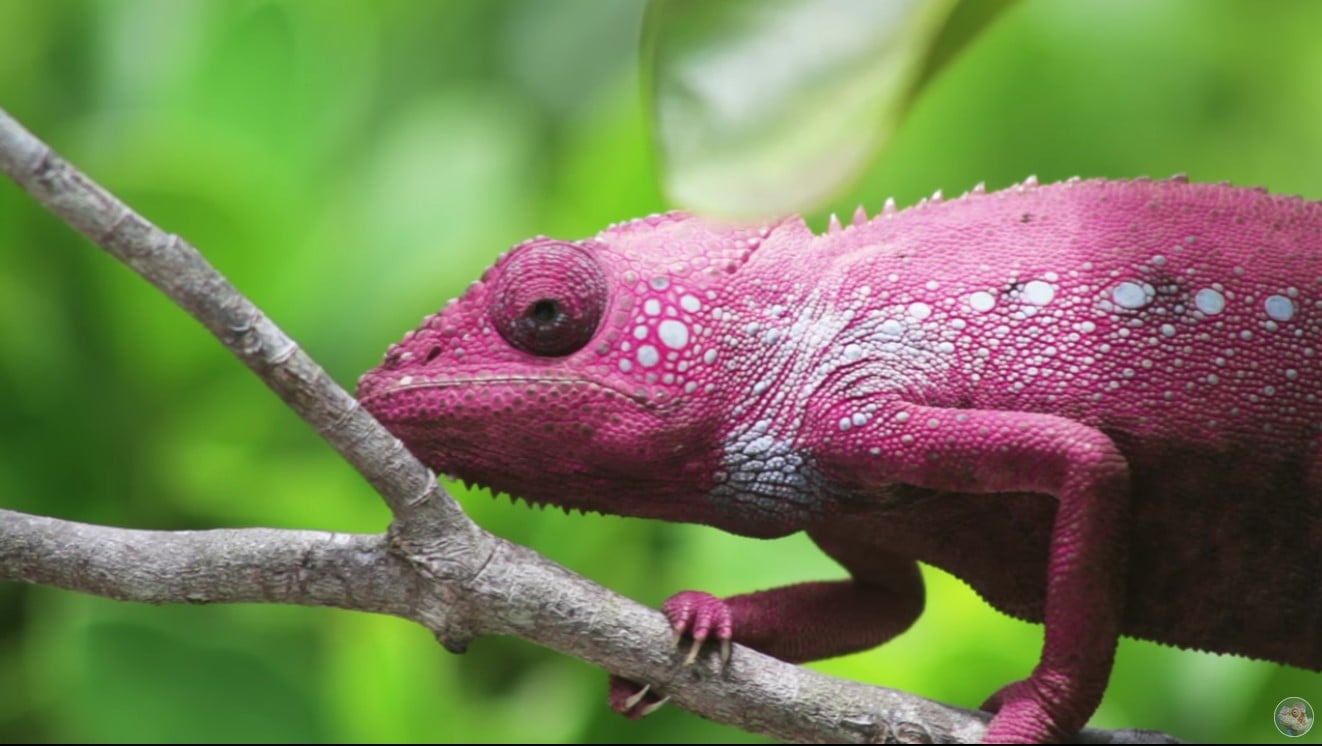Chameleons are indeed fascinating animals. They are adept in camouflage thanks to their ability to change the color of their skin in order to protect themselves from their predators. However, they are not only able to change the color of their skin. Recently, scientists have discovered that these animals have bones that are fluorescent, glowing under UV light, which creates luminous patterns making them glowing lizards.
The chameleons from Madagascar and other parts of Africa are capable of glowing fluorescent under ultraviolet light, although this is the first time scientists reported this phenomenon. They published their findings in the journal Nature Scientific Reports.
“It has long been known that bones fluoresce under UV light, but that animals use this phenomenon to fluoresce themselves has surprised us and was previously unknown,” Frank Glaw, Curator of Herpetology at the Bavarian State Collection of Zoology, Munich, Germany, said in a statement.
The researchers used UV light on 160 different chameleon specimens. Many of the animals turned out to emit a distinct blue glow when they were under the lamp.
“We could hardly believe our eyes,” David Prötzel, lead author of the study and PhD student at the Bavarian State Collection, said. “Almost all species showed blue, previously invisible patterns on the head, some even over the whole body.”
In order to determine this phenomenon of bones glowing under UV light, scientists used sophisticated scans in order to compare the distribution of those patterns and the structure of the creature’s skulls. The glowing spots turned out to match the lizard’s bony bumps and ridges.
The team performed tissue analysis to determine how the glowing mechanism works. UV light can get inside the very thin skin and cover the skulls of chameleons. The light is absorbed by the bones and emits a blue fluorescent light. Also, glowing bones could enable chameleons to communicate, according to the authors.
The male and female chameleons have a different number of bumps located on their skulls. That means that the patterns of their glows should look different. While the glows contrast against the green and brown rainforest colors, the blue glow would enable individual chameleons to be recognized as male or female.
Unlike humans, chameleons can see the ultraviolet light, which enables them to shine even brighter to other chameleons, the scientists believe.
Still, the chameleon is not the only animal that is capable of producing a glow. There are a lot of marine creatures that are known to be capable of emitting fluorescent light. Scientists are optimistic that they will discover more animals that reside on the land that are capable of glowing.





